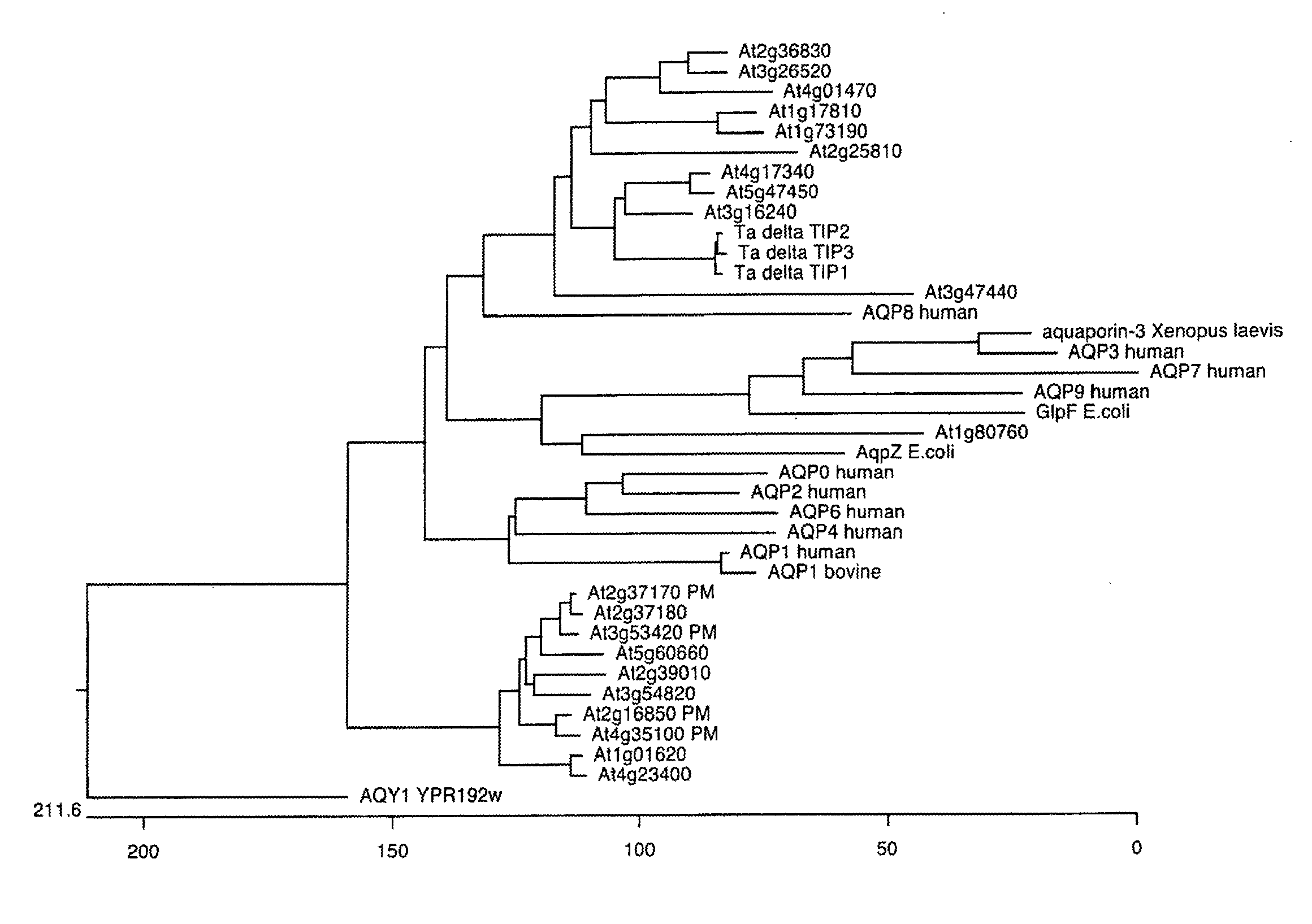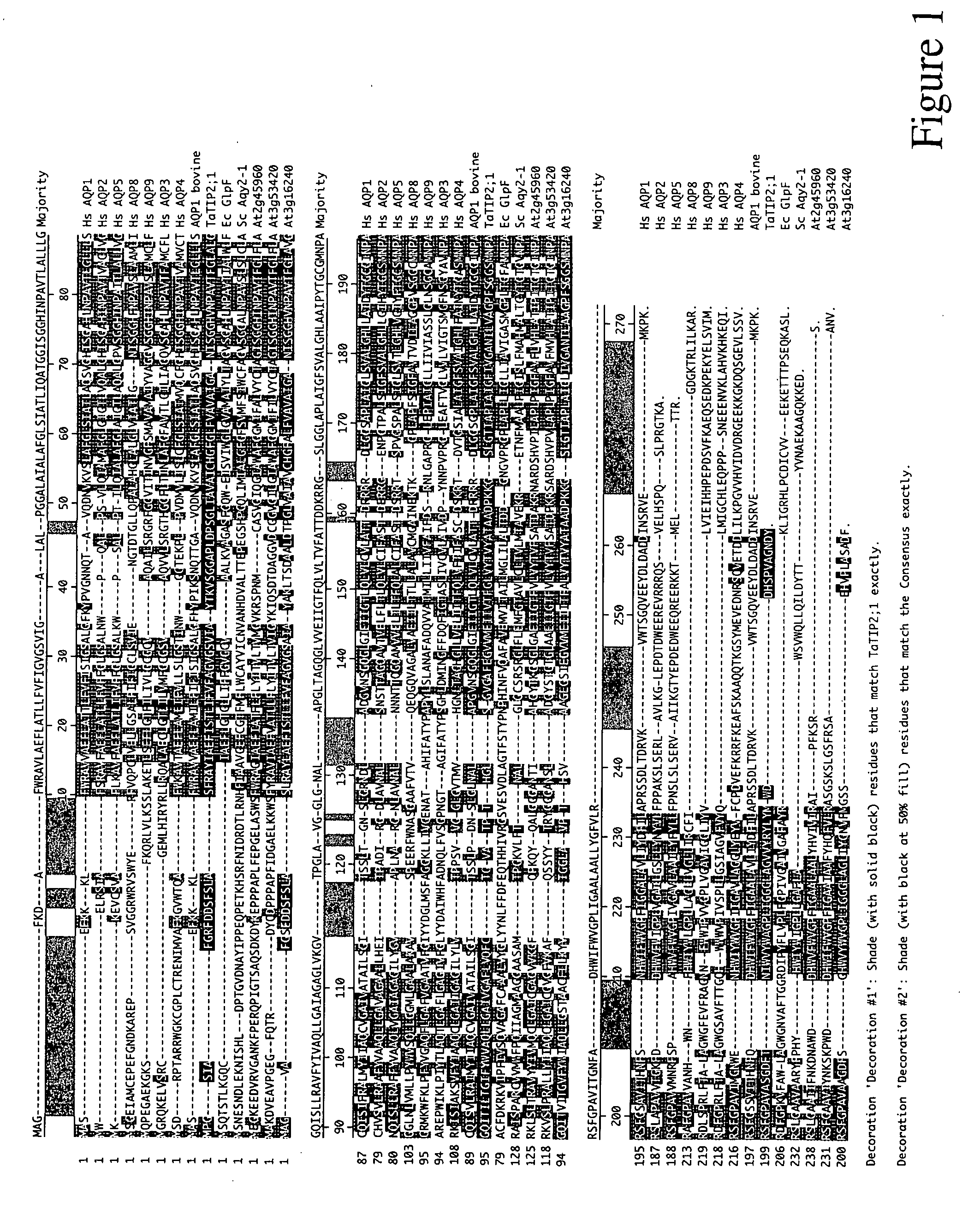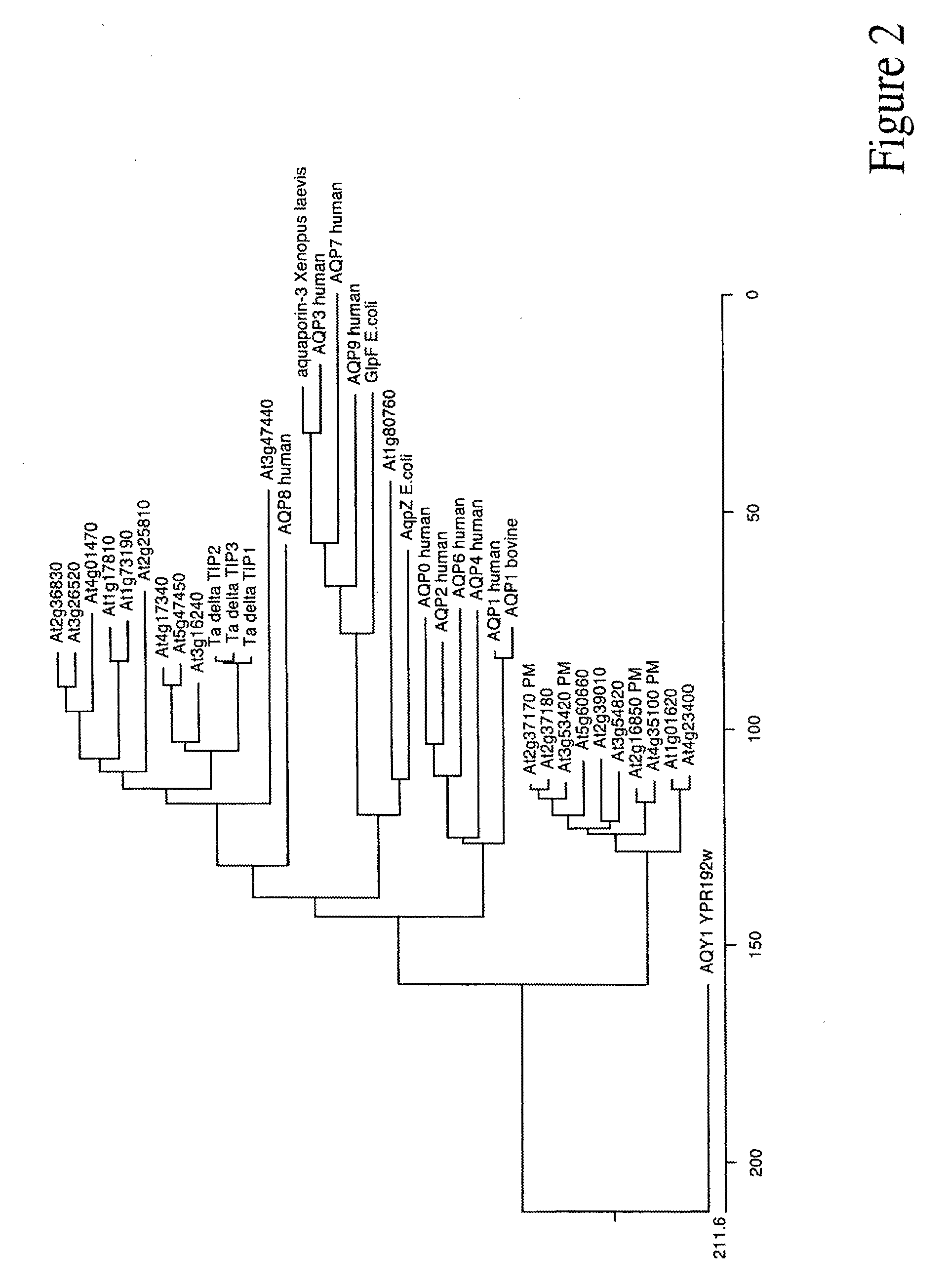Ammonium/Ammonia Transporter
a technology of ammonium and ammonia, which is applied in the field of ammonium/ammonia transporters, can solve the problems of limiting the application and use of such transporters, not being disclosed, and atmospheric pollution, and achieves the effect of restoring the ability of the s
- Summary
- Abstract
- Description
- Claims
- Application Information
AI Technical Summary
Benefits of technology
Problems solved by technology
Method used
Image
Examples
example 1
Isolation of Ta TIP2 Genes from Triticum aestivum
[0125]A Triticum aestivum cDNA library in pYES2 was transformed into a Saccharomyces cerevisiae mutant (Mata ura3 mep1Δ mep2Δ::Leu2 mep3□::KanMX2) that grows poorly on media with 5 mM NH4+ as the sole nitrogen source. As a result of these functional complementation studies, three different 747-base-pair complementary DNAs (cDNAs) from Triticum aestivum were isolated which restored the ability of the mutant to grow normally when 2 mM NH4+is the sole nitrogen source. Further experimental details relating to functional cloning can be found in10. These cDNAs include highly similar open reading frames of 747 bp coding for a 248-amino-acid protein, called Ta TIP2; 1-3.
example 2
Identification of Super-Family
[0126]This Ta TIP2 cDNA sequence was then used as the basis of database searches (a BLAST search of GenBank and SwissPROT databases), which revealed a superfamily of highly homologous proteins referred to as aquaporins. This super-family included homologues in all living organisms were sequence information is available. In particular the super-family included 11 isoforms in human called AQP0-AQP10, two isoforms in E. coli (GlpF and AqpZ), 35 sequences in Arabidopsis46, and four homologues in the yeast Saccharomyces cerevisiae (Aqy1, Aqy2, Fps1 and YFL054c). Alignments of selected amino acid sequences are shown in FIG. 1.
example 3
Cloning into Yeast Expression Vector
[0127]Different mammalian and plant cDNAs, where then subcloned into the yeast expression vector pYES2 and expressed in yeast. In addition to plant TIP2s, AQP8 was shown to significantly improve growth of the yeast mutant when 2 mM NH4+ was the sole nitrogen source. The results of the functional complementation are illustrated in FIG. 6.
PUM
| Property | Measurement | Unit |
|---|---|---|
| pH | aaaaa | aaaaa |
| Tm | aaaaa | aaaaa |
| pH | aaaaa | aaaaa |
Abstract
Description
Claims
Application Information
 Login to View More
Login to View More - R&D
- Intellectual Property
- Life Sciences
- Materials
- Tech Scout
- Unparalleled Data Quality
- Higher Quality Content
- 60% Fewer Hallucinations
Browse by: Latest US Patents, China's latest patents, Technical Efficacy Thesaurus, Application Domain, Technology Topic, Popular Technical Reports.
© 2025 PatSnap. All rights reserved.Legal|Privacy policy|Modern Slavery Act Transparency Statement|Sitemap|About US| Contact US: help@patsnap.com



